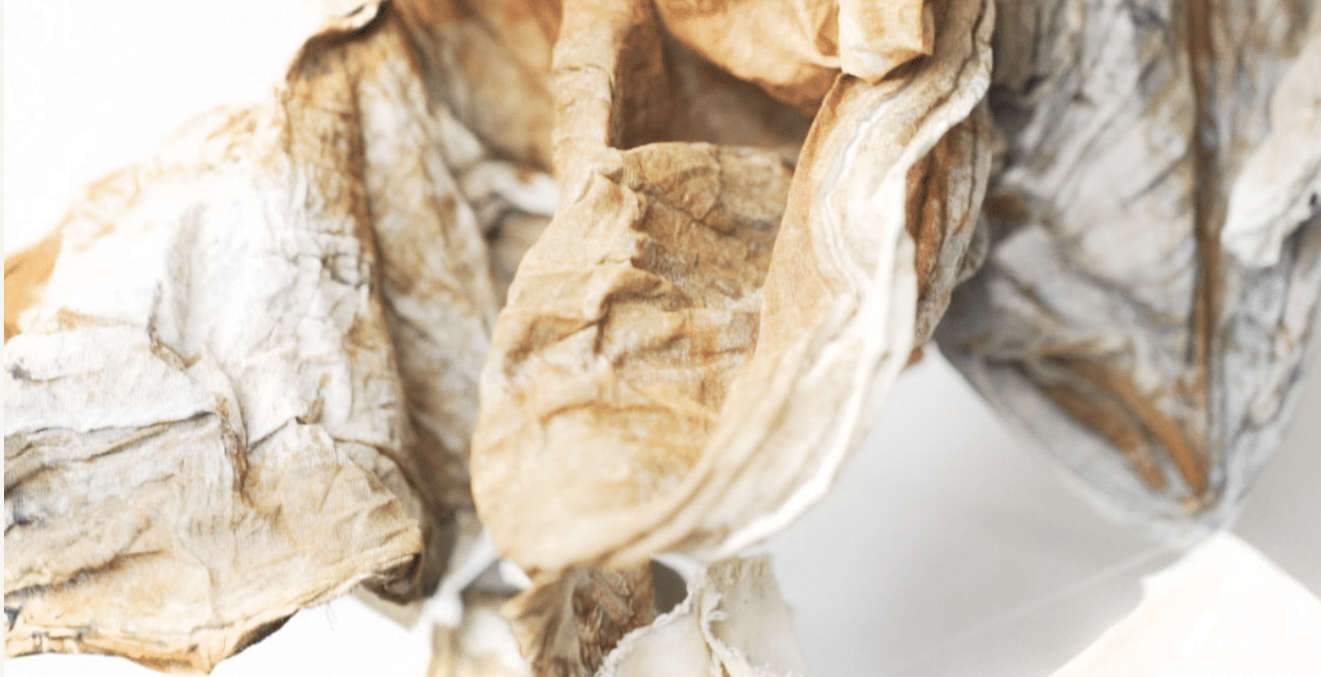Uruguay chooses Eduardo Cardozo as the artist representing the country at the Venice Biennale: the Uruguay Pavilion hosts the exhibition Latente, an exploration of the relationship between two artistic worlds distant in time and space: that of Eduardo Cardozo and that of the great Tintoretto. The proposal manifests itself as an act of connection between two painters through three distinct moments: the nude, robes and the veil.
The first moment, the nude, materializes in the wall of Cardozo’s studio, physically transferred to Venice with a detachment technique that preserves and transports the Uruguayan artist’s creative essence. This gesture not only represents a kind of symbolic “relocation” of Cardozo’s studio, but is also meant to create a connection between the artistic context of Uruguay and that of the Venice Biennale. The second moment, the robes, is based on Cardozo’s interpretation of one of Tintoretto’s Paradise sketches. Through his work, the Uruguayan artist aims to offer a new perspective on a masterpiece by the Venetian master, creating a visual and conceptual dialogue between two different eras and artistic cultures.
Finally, the third moment, the veil, represents an element of material and symbolic connection between the works of Cardozo and Tintoretto. Made from raw cotton cloth scraps used to transfer the studio wall, the veil becomes a bridge between Uruguay and Italy, between south and north, between Cardozo’s artistic vision and his work’s reinterpretation of Tintoretto’s painting.
Eduardo Cardozo’s decision to expose the skin of his studio and transfer the surface layers of the walls through the detachment technique is an act of artistic revelation and vulnerability. This gesture exposes the most intimate part of his being an artist: the space in which he conceives and creates his works. The walls, stripped of their outer surface, become physical witnesses to Cardozo’s creative process, showing the signs of time and damage sustained over the course of his artistic practice. These fleshed-out walls reveal the fragility of the artist and his work, exposing his dependence on the context and frame that surrounds him. Within this prismatic room, the walls of Cardozo’s studio lose their familiarity and become estranged, inserted linearly into a new Venetian frame. This transformation highlights the otherness of the wall, which now represents a foreign presence in Venice: a Uruguayan wall inhabiting a Venetian space. This contrast between the work’s origin and its new context emphasizes the complexity of the cultural and artistic relationships manifested through the relocation and reappropriation of spatial and conceptual elements.
Cardozo, like an explorer of time and space, ventured out to discover Venice, and during his search he came across one of the sketches of Tintoretto’s The Paradise, housed in the Museo Nacional Thyssen-Bornemisza in Madrid. This monumental canvas underwent a lengthy restoration process between 2012 and 2013, which caught Cardozo’s attention and interest. Through a process of artistic reinterpretation, Cardozo decided to recreate the robes of the characters portrayed in Tintoretto’s painting. Using materials such as raw canvas, cloth and linen, shaped and dyed with pigments, the Uruguayan artist brings to life a new vision of the robes painted by the Venetian master. In this process, Cardozo does not seek to imitate the original in a different format, but rather to extract from Tintoretto’s painting a characteristic pictorial language, including forms, gestures, light and color.
In his reinterpretations, Cardozo focuses on the gestures typical of Venetian Mannerism, recreating the intertwining and twisting of forms that characterize Tintoretto’s work. The canvases painted by the Uruguayan artist appear as floating piles of great fluidity and harmony, with Venetian colors dancing in a dialogue of organic forms. The edges of the canvases fade into each other, creating an effect of continuity and movement that envelops the viewer. In this way, Cardozo again “dresses” Tintoretto’s characters, reinterpreting their nudity and creating a new visual narrative.
In the center of the room, the veil dominates: a light, translucent canvas composed of the raw scraps used to transfer the walls of the artist’s studio, joined together through sewing. This veil evokes a feeling of gauze, simultaneously showing and concealing. Constituting a liminal, transitional space between the nakedness of the studio walls and the clothing of Tintoretto’s figures, the veil becomes a crucial element in the encounter between these two artistic worlds.
The veil presents itself as an obstacle in the interaction between the works of Cardozo and those of Tintoretto, proposing a game of seduction between them. As if it were an act of courtship, the veil allows the visitor to gradually discover the different parts, which emerge under a diffused light. This semi-permeable membrane invites the viewer to explore Cardozo’s work and, at the same time, to reflect on himself and his own perceptions.
Through this relational act with the veil, Cardozo not only explores and learns about Tintoretto and Venice, but also about himself. The presence of the veil is meant to represent a moment of self-reflection and personal discovery for the artist, who immerses himself in dialogue with art history and his own work, opening new perspectives of understanding and interpretation.
 |
| Venice Biennale, at the Uruguay Pavilion, Eduardo Cardozo dialogues with Tintoretto |
Warning: the translation into English of the original Italian article was created using automatic tools. We undertake to review all articles, but we do not guarantee the total absence of inaccuracies in the translation due to the program. You can find the original by clicking on the ITA button. If you find any mistake,please contact us.